A varnish is a finish and protective film normally associated with wood, but can also be used on other surfaces. While it has a similar function to paint, that is, protection and aesthetics, the varnish will penetrate the wood and create an even more resistant film. The varnish is basically a paint without the pigment applied. Most of these are resins based on polyurethane and solvents (similar to oil paints).
Woodgrain Shades and Colors
In general, the varnishes are transparent and a colorant is used before applying the varnish, if color is needed. Always apply the colorant before applying the varnish, unless the varnish already has the colorant mixed in. Allow enough time for the solvent to evaporate completely before applying the varnish. If it is wet or cold, it is recommended to leave another 24 hours during the drying time recommended by the manufacturers to be 100% safe.
Varnishes with added color are often intended to improve the appearance of the wood, or even give it a little extra color, which is easier and faster than staining and then varnishing in a two-step process. Similar to paints, varnishes are also available with a satin/silk finish or high gloss, either transparent or with the addition of a very small amount of color
Here are some tips:
- Wet the final grain before dyeing to avoid too much dye
- Start with a diluted dye; you can always increase the intensity of the color by adding a more concentrated “layer” of dye
- The color you see when you apply the stain to the wood is close to the final color. The wood will look dull when the stain dries, but the “wet” color will return when the finish is applied
- You can lighten the tone of the stained wood by wiping a stain with a damp cloth
- Allow the stained wood to dry completely, usually overnight
- Seal the entire surface with a thin layer of sealer, allow to dry and sand lightly with sandpaper
How to Varnish Wood ?
The tools required are minimal: varnish, brush, solvent, rags, strainer or cloth, sandpaper, sanding block and a clean container. If the job allows, and you have access to electricity, a shop vacuum with a brush on the wand is very useful. Consideration should be given to issues such as the length of time required for each coat to set, the best time frame to allow between consecutive coats, and the reaction to moisture as well as temperature.
1. Note that the temperatures in your environment are adequate enough to facilitate curing. In general, low temperatures delay curing for several days. The application of the varnish in superior temperatures is also not advisable since the solvent of the finish tends to evaporate too fast, leaving the varnish to set prematurely, creating uneven films, bubbles and brush marks on the work surface.
2. Prepare properly its place of application. If the application is to be done inside the workshop, other sanding tasks should not be done simultaneously. If you plan to use another room, start by mopping the floor and protect the furniture with plastic.
3. To apply, dip the brush in the sealer and allow the excess to drain. Proceed to brush it on the wood, along the grain, without leaving drips or puddles. The surface must be left to dry overnight before using fine grain sandpaper. The number of coats of sealer depends on the porosity of the wood.
The process is repeated as needed. Using three or four coats of varnish is more or less the ideal way to do the job
The first coat should be applied only after dusting the wood with a cloth. Apply the varnish in slow movements to prevent solvents from evaporating too quickly. The surface must be dried overnight and sanded the next day. The sanding process will indicate how well the drying has occurred. If the sandpaper becomes clogged, then it shows that more time is needed to dry it. If the varnish becomes dusty, all is well and the next coat can be applied. Apply all the coats in a similar way and then allow to cure.
How do You Prepare the Varnish for Painting Wood ?
- Like the paints, there are three main components to varnish: varnish oils, resins and thinners.
- The oils of the varnishes are the ingredient that will cure and/or harden the exposure to the air to form the protective layer that provides a varnish.
- While resins add strength and body to the finished varnish. There is a wide range of natural product compounds such as tree resins and even insect secretions for organic chemicals such as polymers and plastics that are used as varnish resins.
- Before applying the main varnish, you must seal the surface of the wood. Fortunately, the varnish itself can act as your sealer.
- Proceed to dilute an adequate amount of varnish to 50 percent by adding either rubber turpentine or mineral spirits in a 1:1 ratio, that is, half varnish and half solvent.
- Mix both evenly and strain twice into an open container where they will immerse your brush.
How to Dry Wood Varnish Quickly ?
- First of all, you must bear in mind that there are two ways in which varnishes harden, although this will depend on the type of varnish.
- Some varnishes harden immediately when the solvent evaporates. In absence of solvent or diluent, resins and oils become dry and solid. In this case the solvents take several hours, at least, to dry, but when they are dry the varnish is hard (as it always will be) and is ready to use.
- With other varnishes, a continuous reaction occurs between the oils after the solvent has evaporated, which makes it continue for several days in some cases, before the varnish is hard and completely cured. In this case, exposure to air causes oxidation and polymerization, which can occur in a series of processes and take a few days.
- The major factor under our control is temperature and humidity. As a general rule: higher temperatures and lower humidity will accelerate the curing times; although in certain cases this could make the varnish more fragile and vulnerable.
- There are also a range of additives that are used to affect these properties and other favourable properties such as color, flexibility, UV protection and many more.
Tips for Varnishing Wood
- Before starting to apply any varnish, make sure the surface is well prepared; the varnish accentuates rather than hides marks, stains and unwanted strokes.
- Sand the surface down with medium grain sandpaper before filling the cracks. Then sand again with medium grit sandpaper.
- In some cases it is better to dilute the first coat of the varnish with approximately 10% of white spirit (for solvent varnishes) or water for water-based varnishes, especially in polyurethane varnishes.
- Once the first coat has been applied and has dried, it must be rubbed lightly and then a second coat is applied (without dilution).
- Dust and varnish do not mix; unfortunately all sanding before applying the varnish creates a large amount of dust. If the varnish is mixed, it should be sanded gently with fine sandpaper and then another coat applied.
- Unlike paint, varnishes and stains are designed to penetrate the wood. You can even apply a clear varnish to the stain to improve the finish and also make it more durable. They are also available in solvent and water-based versions, as well as a variety of colors and shades.
- If the varnish is too dark, sand the surface after the first coat to lighten the color. Sand only until the optimum color is achieved. Sanding too deep can remove all the varnish.
- Environmental conditions are important, even if the varnish is made in internal areas. If the varnish dries too fast it can cause wrinkles and a loss of the wet edge (too hot), low temperatures can cause excessive opening times that lead to shifting and falling, very high humidity can cause a loss of gloss.
Varnishing Pine Wood
White pine is a soft wood, which means that it has a porous grain and a cellular structure that easily absorbs any applied product, so multiple coats should be applied to ensure a smooth, even finish and protect the white pine from wear and tear.
The steps to follow are the following:
- Sand as smooth as possible, using fine grain sandpaper.
- Clean the wood surface to remove dirt and dust.
- Place the pine piece on a flat surface.
- Apply a thin layer of varnish on the surface evenly.
- Begin to drag the material from one edge to the other with a brush to remove the excess. Clean the brush and repeat the procedure removing all the remaining material before the wood absorbs all the varnish.
- Allow this first coat to dry for 24 hours.
- Sand this first coat very lightly, then apply a second coat and repeat the procedure.
- This second coat should dry for 48 hours.
- In case of finding flat and not shiny points in the surface, repeat the procedure applying another fine coat in all the surface. Do not limit yourself to apply the material only in the points where the material was not absorbed as it could leave an irregular surface.
- This layer must dry another 48 hours.
Varnish Painted Wood
- To obtain a smooth coat of varnish, the underlying paint surface must be clean and smooth. If the surface is dirty, wash it with a soapy sponge and let it dry.
- The preparation should also include lightly sanding the painted surface with medium grain sandpaper to give it a rough finish so the varnish will adhere better. If you see peeling paint, use a wire brush to remove loose particles and then continue with the sandpaper until the surface feels smooth to the touch.
- The varnish will not adhere properly to the oil-based paint without first adding a primer. If it is an older painted surface, the paint is often oil-based.
- To determine if the paint is oil-based, test it by rubbing a small area with a cotton swab dipped in alcohol. If the paint is erased, it is likely to be oil-based and require a water-based primer before applying varnish. If you cannot determine if you are dealing with oil or water-based paint, simply apply the primer anyway.
- The high-gloss varnish is perfect for a contemporary look. The satin or low gloss finish is to preserve the older look of the paint, or to obtain an older finish.
- A smooth finish is feasible with a brush if you are experienced, but the best finishes are usually sprayed. For most smaller jobs, a can of water-based varnish spray will work well. Spray overlapping bands of varnish to slightly cover the surface.
- When dry to the touch, lightly sand the surface with medium grit sandpaper. Be careful when sanding corners and edges; it is easy to sand through the paint in these places. Add up to three more coats to obtain a deeper shine and better protection.
Varnishing New Wood or With Roller
For large areas, the varnish should be applied with a roller and then touched up with a brush. Be sure to apply the varnish as uniformly as possible with the roller. Also, the finishes must be sanded between coats.
A good roller helps you deliver a fast and professional finish, perfect for wood oils, stains and varnishes. Preferably with good quality microfiber and velvet covers.
Varnishing Exterior Wood
Exterior varnish or urethane (both finishes are technically “varnishes”) builds a protective layer over the wood, but offers superior protection and durability over an oil finish. These in particular are formulated to protect against moisture and UV radiation.
The exterior varnish is applied with a natural bristle brush in multiple layers. Eight thin coats are recommended for maximum protection and a glossy finish. Lightly sand the hardened varnish between each coat. They are often microporous, allowing the wood to ‘breathe’. They also have an additional fungicide to prevent mold growth.
They are very similar in formulation and performance to a yacht varnish, as they are relatively flexible, but slow to cure, even if they dry to the touch relatively quickly. The exterior varnish usually lasts 2 to 3 years before it begins to look like chalk. As soon as you see a chalk film starting to develop, it’s time to refresh the finish.
Varnishing Natural Wood
The natural linseed oil varnish is made from linseed oil with a drying additive, which is a natural product applied to protect wood surfaces for centuries. It penetrates deep into the wood, creating a permanent, sustainable layer against decay and adverse weather conditions. This type of varnish is ideal for natural wood, since it is permeable so the wood is preserved naturally.
To apply it, the varnish must be carefully mixed before use. If the wood is not very permeable, process it first with sandpaper. Proceed to apply a thick layer of the varnish with a soft brush and after 2-4 hours clean the residue of the color with a cloth. The drying time depends on the type of wood. The coloring is carried out in 2-3 layers of varnish, applying each following layer after the previous layer has dried.
Varnishing Old Wood
Neglected wood furniture often suffers from a buildup of dirt and grime, and the diminished color and gloss results in a dull appearance. Many times, these surfaces can have water marks that mar the top.
It’s easy to restore old wood furniture on a DIY basis, but make sure you use the right products: Work gloves, dust mask, brushes, patented chemical remover, wax and polish remover and stainless steel wool, sandpaper, wood stain, oil finish, lint-free cloth. If the wood is very old, apply the wax remover with an old brush. The material is left to stand for 5 to 30 minutes until the varnish and enamel mixture has dissolved.
Neutralize the wood with a steel wool pad soaked in patented wax and enamel remover, following the grain of the wood. Wipe off residue with cotton cloth and leave for 24 hours. Dirt and old enamel should be cleaned up elsewhere by applying wax remover to a steel wool or coarse cloth pad and working on small areas at a time. This is left on for a few minutes to soften the wax, then wiped off before it solidifies.
24 hours after peeling the table, use a sandpaper to smooth the wood fibers raised during the peeling process: work with the streaks. Shake and vacuum the protective film to remove any dust that might damage the finished piece. Finally, wipe the top with a cloth. If it is very discolored, apply a wood stain so that it has a uniform color. Apply generously with a brush and allow the stain to penetrate. Wipe off the excess with a cloth.
Once dry, apply a coat of finishing oil with a brush or a lint free cloth. Allow oil to penetrate for 10 minutes and wipe off excess before it becomes tacky. Wait at least five hours and rub gently with steel wool before applying another coat; repeat again: the more coats, the greater the durability.
How to Varnish Chocolate Color Wood ?
Proper surface preparation is vital when finishing dark wood. First it must be sanded thoroughly to smooth the surface of the wood. Always sand parallel to the grain when doing this final sanding, this eliminates small swirls or cross scratches that are difficult to see, but will appear later if not removed. Similarly, all steps are followed in the same way
In case you want to change and, on the contrary, darken a wood from medium tone to chocolate brown, there is a guide of colors and combinations of stains that can help and facilitate this task. If you combine basic colors such as red and blue have a tone closer to purple, red and yellow make orange, and blue and yellow green, but to get the brown must combine red, yellow and blue …
How to Varnish Wood By Hand ?
You will need a high quality fabric, microfiber cloth, foam sponge or cotton sheets for an easy finish, and choosing the right one is very important.
Cotton cloths are absorbent and perfect for applying oils and dyes. Microfiber cloths have thousands of tiny fibers per square inch, so they work very well with wood cleaning products.
How to Varnish Wood with a Gun ?
For the application of the varnish with a gun you need a special preparation for the varnish that makes it a much more liquid material. It must not be sticky because then they can be generated of small depressions or accumulations of material. Inevitably a thinner material application means that more coats must be done to create the ideal coverage depth, and you still need to sand between coats.
The solvent is the ingredient that thins the oils and resins that make up the varnish itself, allowing the varnish to be applied easily. Having done its job, it should evaporate and allow the resin and oils to cure and harden. The thinner can be a variety of solvents. Water can be used in some varnishes. The more diluent is added, the more liquid the varnish will be… perfect for spray application, which will require a thinner mixture.
It is important to work vertically because it is easier to operate the machine in this way. When applying it, just put enough material to cover and minimize the dripping that may be created in the first coat.
How to Varnish Wood With a Brush ?
It is always advisable to buy brushes designed specifically for wood finishing. The best brushes for the task are those made with Chinese bristles or natural hairs. A cheap but effective alternative is the plastic foam brush, which is disposable. You can buy a brush for each coat of varnish you apply because they are very economical. You will also have the security of a good quality work, even with inexperience, since these brushes do not leave brush marks
Hand brush polishing brushes allow you to create incredible deep shine and luster with ease. For the first few coats, dip the brush into the unreduced varnish and apply it to the surface in rapid movements. Usually you should start with horizontal strokes.
Then, without dipping the brush into the varnish again, move the brush slightly over the surface in a vertical motion. Make only a section wide enough to be able to finish it and start in the adjacent area without losing the wet edge.
Related Products in ALPHAPEDIA
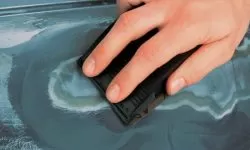
WATER SANDPAPER: Types and Numbers or Measures

DRILL BIT: Types, Brands, Prices and Offers

PVC ELBOWS: Types, Prices and Dimensions
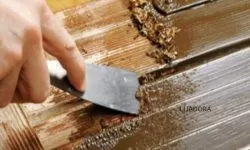
PAINT STRIPPER For Wood, Iron and Chemicals

La inteligencia artificial (IA)

ADHESIVE TILES: Prices, Brands and Types or Models
Other Products of Interest in ALPHAPEDIA
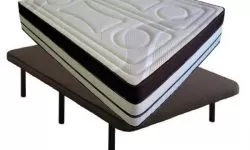
UPHOLSTERED BED BASE: 90×190, 135×190, 150×190, 150×200

HEATING PAD: Brands, Types and Prices
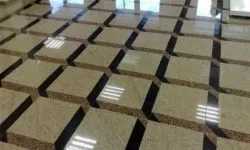
FLOORING AND TILES NEAR YOU AND ME

FOOD DIGITAL SCALES: Prices

💚 WALL LAMPS MODERN: Great Price on Qualified Products
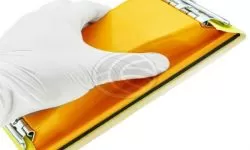
MANUAL HAND SANDER: Brands as Dewalt and Black & Decker
WOOD VARNISH IMAGE



